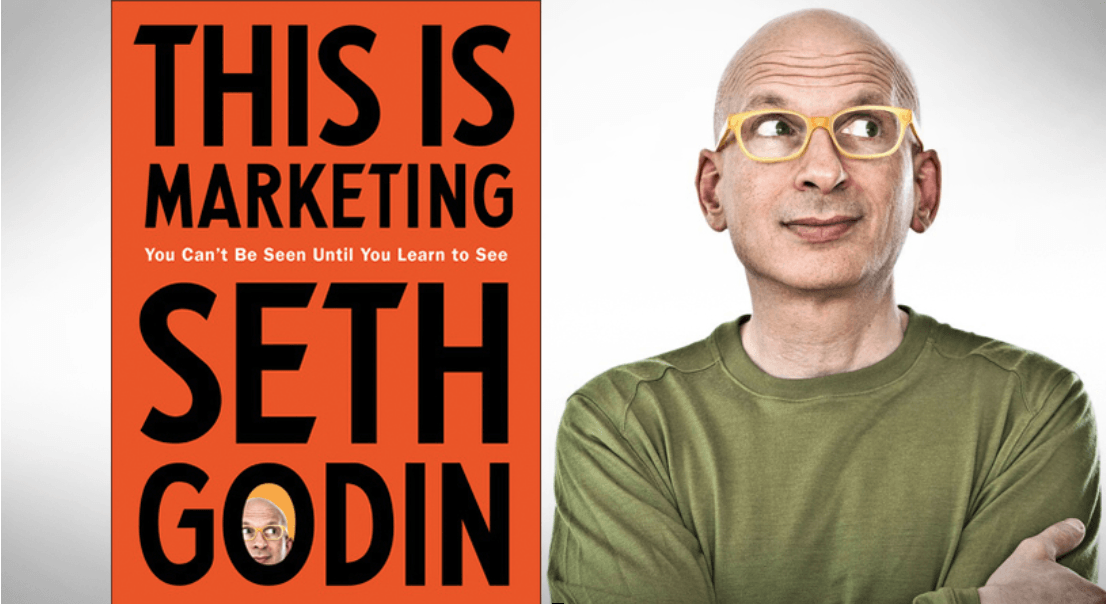
In 2018 Seth Godin was inducted into the American Marketing Association’s Marketing Hall of Fame. Business Week put his book ‘Linchpin’ on its list of ’20 of the best books by the most influential thinkers in business.’ The power of his ideas has made him a highly in-demand public speaker.
In his latest book Godin discusses how the marketing landscape has transformed over the past few decades. We all know how the internet has undermined TV’s ability to reach mass audiences. So, how can businesses find new ways to spread the word? Yes, you can target precise groups online anywhere, anytime. You can measure every click and conversion, but then you realise everyone else can do the same!
So, how does Godin think you can make your marketing more effective?
Marketing starts with the process of making something worth buying
Seth argues that making successful products isn’t solely down to design or meeting ‘wants’. It’s also about the role of marketers. Here the key is to identify an underlying human desire and make sure your proposition fulfils it.
It’s like the famous story of the drill bit. The consumer who buys it doesn’t really want a drill bit. They don’t even want the hole it makes. What they really want is a benefit the drill bit can bring – say a shelf for displaying things; even more than that they want the sense of pride that comes with visitors admiring the shelf.
For Godin, the mission of marketers is ‘to truly see and understand the people you seek to influence’ – and then to tell stories that speak to their emotions. He advises brands to employ tactics that rely on empathy and connection rather than attention-stealing ads and spammy emails. This very much echoes Kokoro’s own 5Drivers model, which sets out how particular consumer feelings underpin so much of buying behaviour.
Realise you can’t please everyone
Different people want different things even when they seem to have the same desire e.g. to some, adventure means thrill-seeking, whilst to others it means international travel.
Brands need to narrow their target audience by dividing it into two groups, ‘adapters’ and ‘adopters’ – the former want familiarity, the later embrace new things, and you need to tell each group different stories.
Assume an extreme position to find your target audience
When looking at how to tap into the needs and desires that stimulate purchasing, most brands play it safe and sit in the middle-ground. Here the competition is fierce. If your brand is a start-up it’s hard to get heard and it’s better to target one of the extremes.
Get people to buy by challenging their status and creating tension
Work out the people who belong to your tribe and how they approach their status relationships. There are two approaches: affiliation and domination. Those seeking affiliation want to feel they fit into a particular group, and so messages that signal popularity will score.
People who seek ‘domination’ want to climb the ranks and see their group outgrow others. Here you have to signal strength and success. Seth draws upon the example of Uber in the early days, when it took on local governments, competitors and even its own drivers: ‘We’re here to win and nothing’s going to stop us. So why not join us and become a winner too?’
Build the bridge that allows your product to spread
Look at your fanbase versus the adapters. You need to convince the adapters to let go of their way of doing things. This happens through the ‘network effect’ – whereby a product becomes more valuable as more people use it. People use it, this sets off a positive feedback loop and the product becomes more useful and then more people use it, and so on.
As the rules of the industry change, This is Marketing is a timely analysis of how brands and marketers must adapt. The book’s subtitle ‘You can’t be seen until you learn to see’ is a neat summation of the growing importance of probing deeper into the real drivers of consumer choices – and it chimes with Kokoro’s growing emphasis on helping companies deliver emotional benefits not drill bits.
